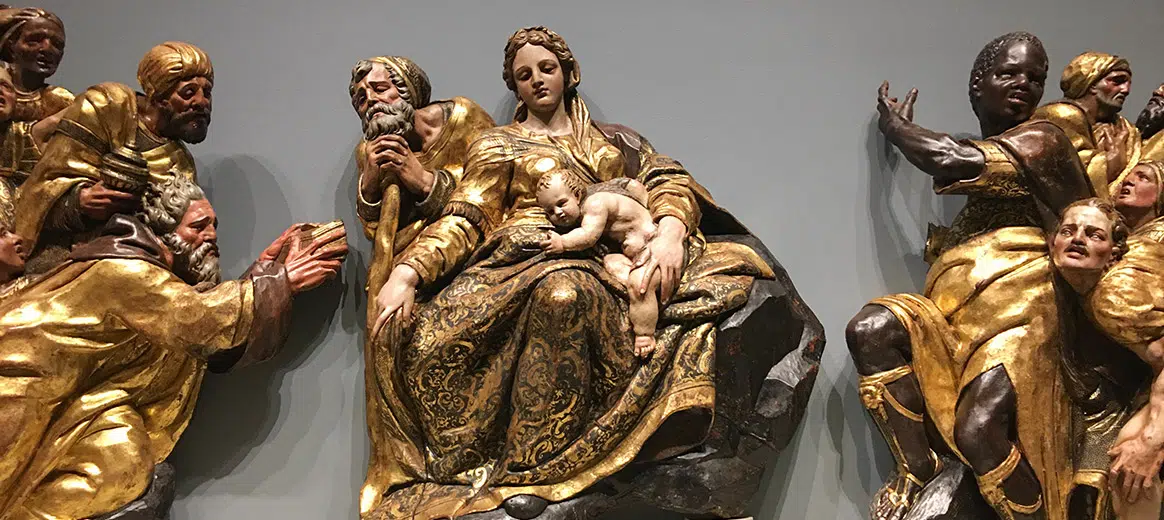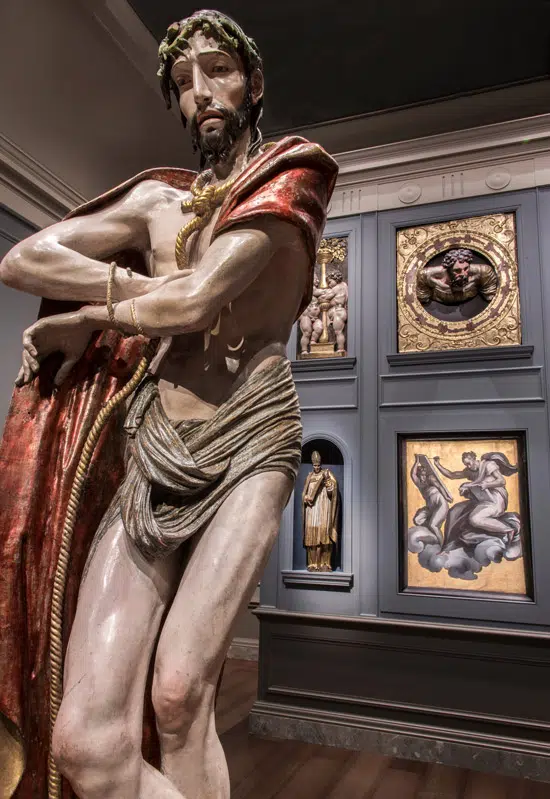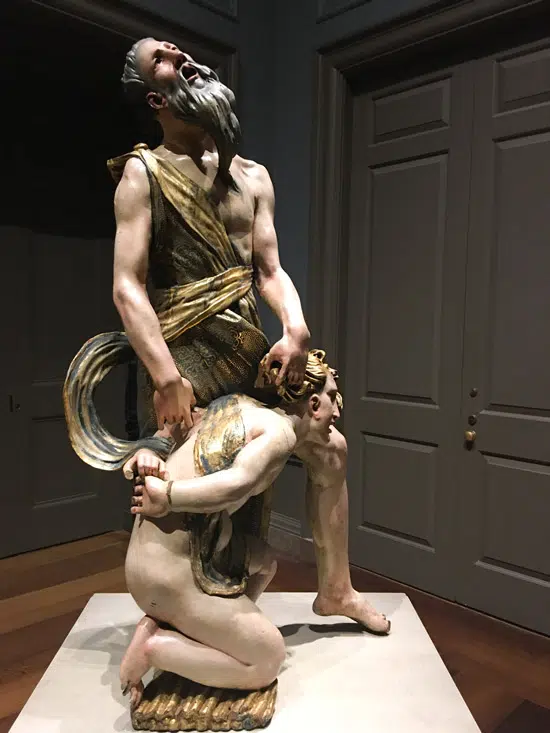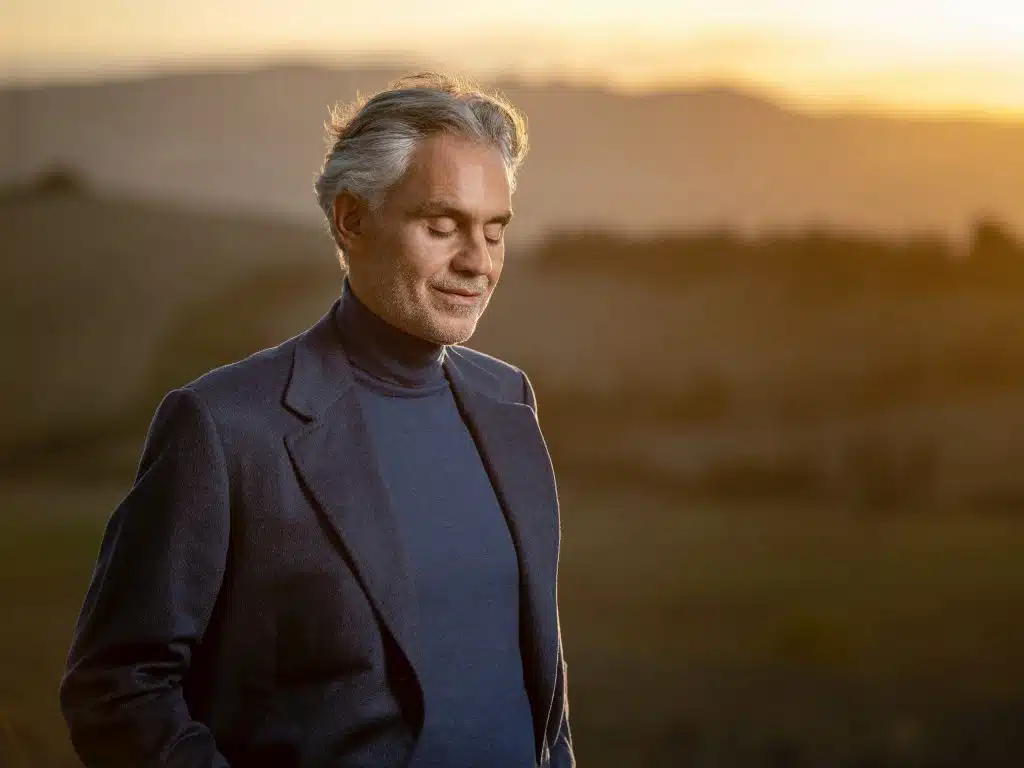For the first time, the work of celebrated Spanish sculptor Alonso Berruguete is being featured at the National Gallery of Art in Washington. Not only did Berruguete bring the emotional power and physical realism of the Italian Renaissance to Spain, he brought Christ back to the center of Spanish religious art.
As liturgical Christmastide draws to a close Jan. 12, Berruguete’s moving paintings, sculptures and drawings invite us to contemplate the mystery of salvation from the birth of Christ to his death and resurrection.
Nothing could make this more palpable than his early masterpiece, the “Ecce Homo” on view in the first room of the special exhibition. It portrays Christ after his torture being presented to the people — “Behold the Man,” says Pontius Pilate. Unlike earlier Spanish statues of this theme, the figure is not covered with bloody welts. Instead, his physical and mental suffering radiate from his weary limbs and sadly introspective face, calling forth our empathy.
Originally, this “Ecce Homo” would have been part of a great altarpiece in a Spanish church. As a backdrop to this statue, the gallery has installed a partial reconstruction of such an altarpiece. These multitiered, multimedia altarpieces, called retablos, were a specialty of Berruguete, and the fact that many are still in situ in Spain is one of the reasons that this great artist has not been famous here.
Alonso’s father was an accomplished painter whose gemlike “Virgin and Child” is also in the exhibit. The son studied painting in Rome from 1508 to 1518, soaking up the techniques and ideas of the greatest works of the High Renaissance masters living there: Michelangelo, Raphael and Leonardo da Vinci. Returning to Spain in 1518, Berruguete was named court painter to King Charles I. Then, he reinvented himself as a sculptor.
An Epiphany
His three-part group of statues of the “Adoration of the Magi” is made of painted and gilded wood. He carved it in 1538 as the center section of a retablo in a parish church in Valladolid, Spain, where the artist had settled in 1522.
The middle part of his life-size Adoration group shows the Holy Family. With St. Joseph peering over her shoulder, the Virgin Mary looks tenderly down at the babe squirming to receive the gift of the oldest king. Mary’s stable, pyramidal pose reflects Berruguete’s study of Italian Renaissance pictures of the Virgin and Child. To either side, the “overjoyed” (in the words of St. Matthew) Magi surge toward the Christ Child with their gifts. Berruguete lets his figures speak to us through their bodies in a way that is almost dance-like.
In its usual setting, the Adoration dominates the center tier of the four-tier retablo in the Epiphany Chapel of the Church of St. James the Apostle. At the bottom, donors kneel. Over the Adoration panel the Virgin Mary is assumed into heaven, flanked by panels depicting the Annunciation and Nativity. At the top, Mary mourns with John at the foot of the crucified Lord.
During Mass, as the miracle of transubstantiation takes place, the worshipper’s gaze moves upward from the body of the infant Christ, which for all its energy still sits right in the center, to the sacrificed body on the cross.
The dominant role of Jesus in Berruguete’s “Adoration of the Magi” strongly contrasts to a slightly earlier picture of the same subject in the exhibit. This panel of 1519 by the “Master of Sigena” was one of 16 in a large altarpiece for a convent near Zaragoza in northeastern Spain.
Although it was common for artists in the 15th and 16th centuries to identify the Magi with contemporary rulers, the Master of Sigena made one of them the main figure in the story. The youngest magus standing in the center of the panel is probably an idealized portrait of King Charles I, who had just ascended to the Spanish throne. (Over his head waves a red banner emblazoned with the double eagle of the Holy Roman Empire.) For all the rich colors and pageantry of the scene, the facial expressions and physical movement of the figures remain static and emotionally remote.
Berruguete’s most brilliant single work on view takes us to the reading from Genesis 22 in the Easter Vigil. Abraham and Isaac, Old Testament precursors of God the Father sacrificing his only Son, turn in opposite directions at the moment when Abraham, looking upward, perceives the heavenly voice that will tell him not to kill the anguished boy.
“Alonso Berruguete: First Sculptor of Renaissance Spain” is in Washington until Feb. 17 at the National Gallery of Art, which is free and open to the public every day.
Hamerman writes from Reston.
Watch the Video
https://www.nga.gov/exhibitions/2019/alonso-berruguete-renaissance-spain.html




